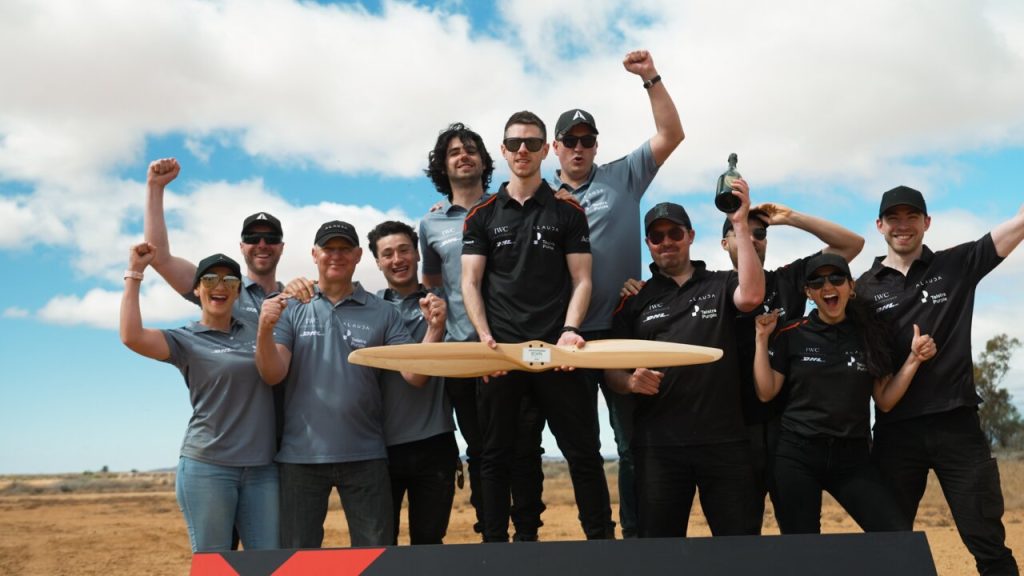First Drag Race Takes Place Between Internal Alauda Teams
November 4, 2021
A historic first drag race took place between internal Alauda teams at over 100km/h.
This is being considered as a giant leap forward for electric flying car racing, a next-generation clean-air motorsport. Team Bravo crosses line 3 seconds ahead of Team Alpha over the quarter mile.
A landmark moment in the future of motorsport played out in the deserts of South Australia last week as a pre-season test concluded with the first ever timed electric flying car drag-race.
The drag-race was part of a key pre-season testing session for EXA, Airspeeder’s first electric flying car racing season, created by Alauda Aeronautics. This historic moment provided a first glimpse of flying car racing as a sporting entity, ahead of international competition in 2022.
Race events will see a grid of full-scale electric flying cars known as Speeders race blade-to-blade in landscapes where motorsport has never been before. Teams from a broad range of industries will be provided with the Speeders but given technical and tactical freedom to approach gaining competitive edge in the series as they see fit. This will ensure close motorsport based on pilot skill and race management.
Fans from around the world will watch via global broadcasts with coverage enhanced by technology that communicates the virtual tracks and race telemetry data projected directly to pilots through augmented reality.
Because flying car racing does not require the same physical infrastructure as legacy motorsport, this presents a sport built from the ground-up with sensitivity to the global requirement to race with minimal ecological impact.
This first drag-race represented the culmination of intense internal competition between two-sides of the Alauda Aeronautics technical team. The result was a tense and visually enthralling encounter with the internal teams forced to adapt strategy in line with wind and dust conditions in the selected desert location. As races play out in varying conditions including over ice, over sea, deserts and even forest locations, mastery of external factors add a compelling tactical layer to the sport.
With the successful completion of this historic first drag-race, Alauda is poised to announce the world’s first electric flying car Grand Prix calendar under the banner of the EXA Series. These remotely piloted races will serve as a vital feeder series for the forthcoming crewed Airspeeder Grand Prixs. In addition to developing the technology that underpins the sport, it will be a breeding ground for the elite pilots that will pioneer the dawn of the electric flying car racing era.
These women and men are drawn from the very elite of motorsport, eSports and civil, military and acrobatic aviation. They will play the same role pioneer racing drivers did at the genesis of the automotive and aviation eras in accelerating a new mobility revolution. Indeed, the eVTOL (electric vertical take-off and landing) which is predicted to be worth $1.5trillion by 2040 has never been more vibrant.
Alauda Aeronautics has created the motor racing arm of this new form of transport and with it a place and a space for the industry to rapidly develop key safety, performance and digital technologies. This will hasten the arrival of electric flying cars that promise to liberate urban environments from congestion through a clean-air form of advanced aviation mobility.
THE DAWN OF A NEW SPORT:
“I gave (my drivers) three things: a sense of optimism, a creative environment and the ultimate motivator; competition. By competing with each other in-house we wound up beating our rivals,” said Enzo Ferrari


